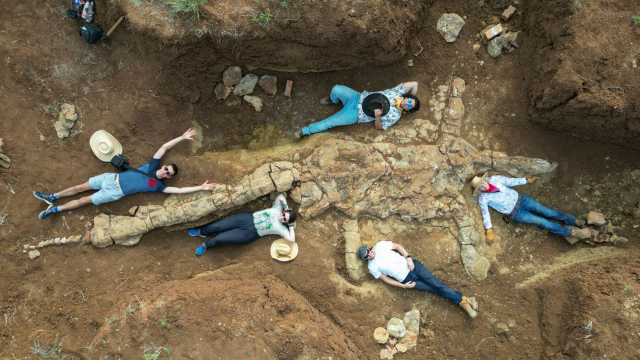Fossil hunters in Queensland have uncovered what they call the ‘Rosetta Stone of marine palaeontology’: the first head and body of a 100-million-year-old long-necked marine reptile to ever be dug up in Australia.
The fossil was uncovered by the ‘Rock Chicks’, a trio in Queensland that have turned fossil hunting into a hobby, with the motto “let’s keep the paleos busy”. They search for fossils every year as a team and have made several exciting discoveries, but this is definitely one of the bigger ones.
The fossil itself appears to be an elasmosaur, a species of plesiosaur (extinct marine reptiles) that co-existed with dinosaurs.
🦴 @qldmuseum and @jcu say they have excavated Australia’s first head and associated body of a 100-million-year-old long-necked marine reptile
🪨They say it been described as the Rosetta Stone of marine reptile palaeontologyhttps://t.co/Ay68hE0nmi pic.twitter.com/ytaNA0I36U
— Australian Science Media Centre (@AusSMC) December 7, 2022
“We were extremely excited when we saw this fossil,” Queensland Museum Network senior scientist and curator of palaeontology Doctor Espen Knutsen said. Knutsen led the expedition.
“It is like the Rosetta Stone of marine palaeontology as it may hold the key to unravelling the diversity and evolution of long-necked plesiosaurs in Cretaceous Australia.”
Knutsen went on to explain why it’s difficult to find a fully intact skeleton of one of these creatures. Because their bodies are two-thirds neck, heads are commonly separated from the rest of the body after death (which makes intact fossil preservation much less common).
What’s a marine reptile doing in Queensland, I hear you ask? Well, during the Cretaceous period (between 145 million and 65.5 million years ago), Queensland (and parts of the Northern Territory and New South Wales) was covered in the Eromanga Sea.
Marine reptiles thrived in this ocean that no longer exists today, and it’s hoped that this fossil will help uncover some of the mysteries of the prehistoric ocean.
Several other fossils were found on the trip, including other plesiosaur and ichthyosaur remains, but the elasmosaur was easily the most impressive discovery. The fossils are being sent to Townsville, where they’ll be researched further.
Good find, Rock Chicks. Well done.
You can read more on the Queensland Museum website.
